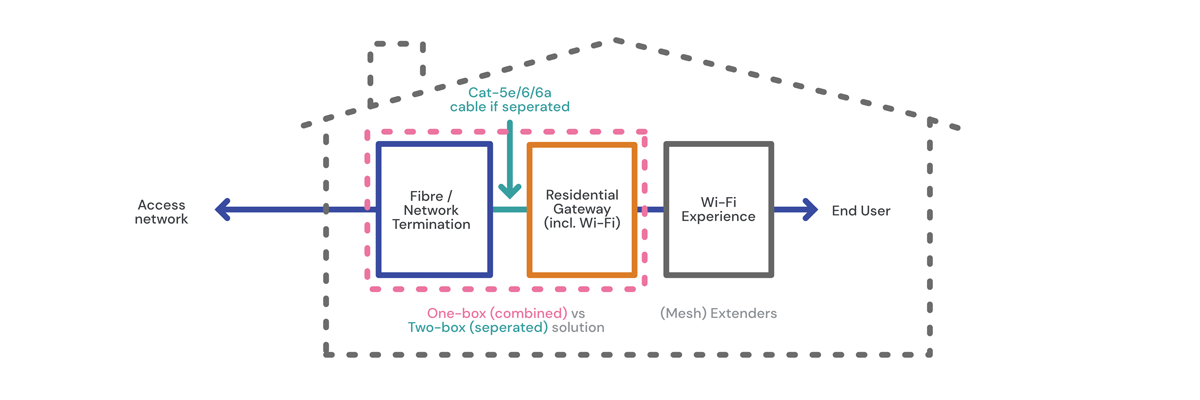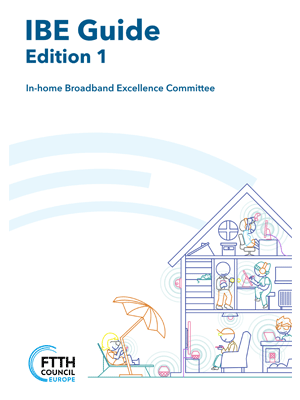FTTH Council publishes ‘In-home Broadband Excellence’ guide

In recent years, the importance of the home environment to performance and user experience of in-building broadband networks has increased. Deployment doesn’t stop when the fibre reaches the home as consumers don’t use 'fibre' - they use 'services'. And these services are increasingly consumed throughout the entire home, using infrastructure such as CAT-5e/6 cabling, Wi-Fi and other technologies.
“In-home and access networks are different in many ways, apart from the technical aspects, and that calls for different ways of thinking and different solutions,” explains Maarten Egmond, Committee Chair. “Each POP or CO location in an access network will follow a similar design and layout, whereas each home is different. The access network isn’t altered or updated very often, whereas home networks might be. What’s more, equipment in the access network is generally standards-compliant and extensively tested. At home, however, anything might show up. The CSP has no idea what devices are used and home, or why they were chosen, but the end user will simply expect them to work as intended.”

Maarten Egmond
Committee Chair
To arrive at the best possible solution, CSPs need to answer three questions in turn, each building on the previous. The guide is structured around these three questions.
How to extend fibre performance to the end device?
Good infrastructure must be provided to bring data across the entire home with sufficient bandwidth and quality. This is no trivial undertaking, as homes can be vastly different.
How to manage the user experience?
The infrastructure, and indeed the user-experience, needs to be managed. If a CSP does not have insight into the home, and the infrastructure, it becomes impossible to answer questions from subscribers that have run into problems.
How to add value and monetise it?
When infrastructure and management are fully in order and optimised, it’s possible to add new services that can be delivered and managed over the infrastructure. This area is still undergoing extensive development, from an industry implementation viewpoint as well as within standardisation bodies.
The guide aims to provide a basic understanding of various relevant in-home transport technologies and standards, the roles of different network equipment, ways of realising full in-home coverage, safeguarding quality of service in the home, and managing the user experience and in-home connectivity. Apart from these key topics, further considerations, such as in-home security and data governance/management are included. An extensive chapter on applications with revenue- generating potential examines how CSPs can improve their competitive position by adding value for customers.
“The technology and business aspects of IBE continue to evolve, and are only really being discovered now,” Maarten concludes “I’d like to invite all readers to let us know what interests them, and whether they have ideas on content, best practices, or guidance. This will be taken into account as we further develop and expand the guide.”






